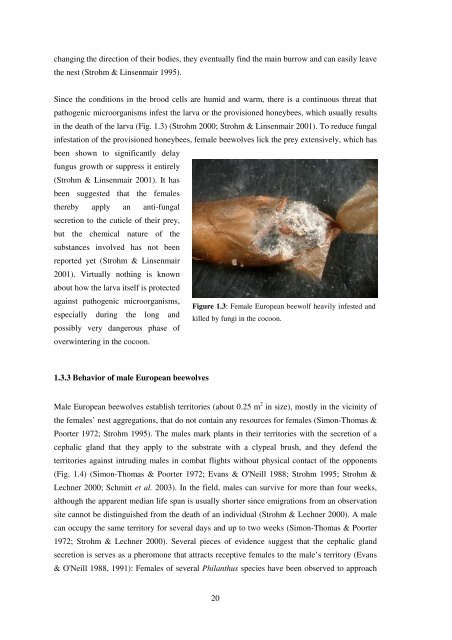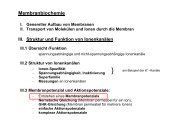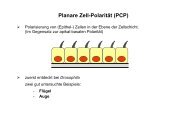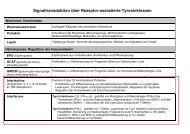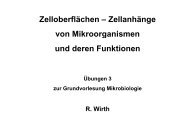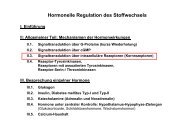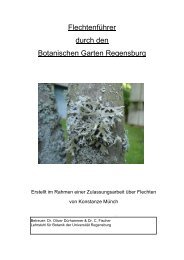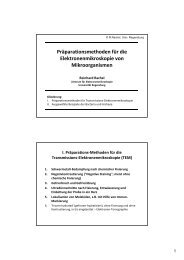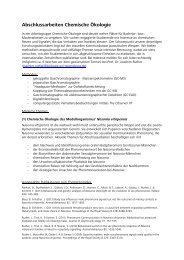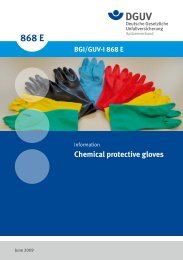PhD thesis
PhD thesis
PhD thesis
Create successful ePaper yourself
Turn your PDF publications into a flip-book with our unique Google optimized e-Paper software.
changing the direction of their bodies, they eventually find the main burrow and can easily leave<br />
the nest (Strohm & Linsenmair 1995).<br />
Since the conditions in the brood cells are humid and warm, there is a continuous threat that<br />
pathogenic microorganisms infest the larva or the provisioned honeybees, which usually results<br />
in the death of the larva (Fig. 1.3) (Strohm 2000; Strohm & Linsenmair 2001). To reduce fungal<br />
infestation of the provisioned honeybees, female beewolves lick the prey extensively, which has<br />
been shown to significantly delay<br />
fungus growth or suppress it entirely<br />
(Strohm & Linsenmair 2001). It has<br />
been suggested that the females<br />
thereby apply an anti-fungal<br />
secretion to the cuticle of their prey,<br />
but the chemical nature of the<br />
substances involved has not been<br />
reported yet (Strohm & Linsenmair<br />
2001). Virtually nothing is known<br />
about how the larva itself is protected<br />
against pathogenic microorganisms,<br />
especially during the long and<br />
possibly very dangerous phase of<br />
overwintering in the cocoon.<br />
1.3.3 Behavior of male European beewolves<br />
Figure 1.3: Female European beewolf heavily infested and<br />
killed by fungi in the cocoon.<br />
Male European beewolves establish territories (about 0.25 m 2 in size), mostly in the vicinity of<br />
the females’ nest aggregations, that do not contain any resources for females (Simon-Thomas &<br />
Poorter 1972; Strohm 1995). The males mark plants in their territories with the secretion of a<br />
cephalic gland that they apply to the substrate with a clypeal brush, and they defend the<br />
territories against intruding males in combat flights without physical contact of the opponents<br />
(Fig. 1.4) (Simon-Thomas & Poorter 1972; Evans & O'Neill 1988; Strohm 1995; Strohm &<br />
Lechner 2000; Schmitt et al. 2003). In the field, males can survive for more than four weeks,<br />
although the apparent median life span is usually shorter since emigrations from an observation<br />
site cannot be distinguished from the death of an individual (Strohm & Lechner 2000). A male<br />
can occupy the same territory for several days and up to two weeks (Simon-Thomas & Poorter<br />
1972; Strohm & Lechner 2000). Several pieces of evidence suggest that the cephalic gland<br />
secretion is serves as a pheromone that attracts receptive females to the male’s territory (Evans<br />
& O'Neill 1988, 1991): Females of several Philanthus species have been observed to approach<br />
20


